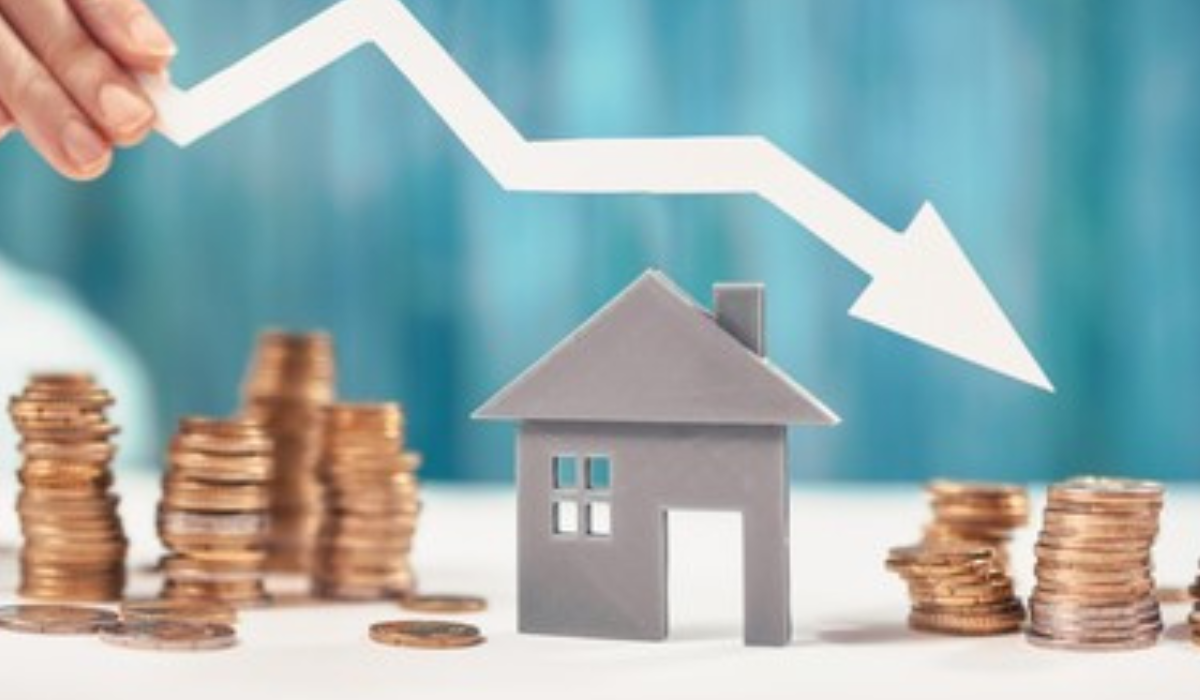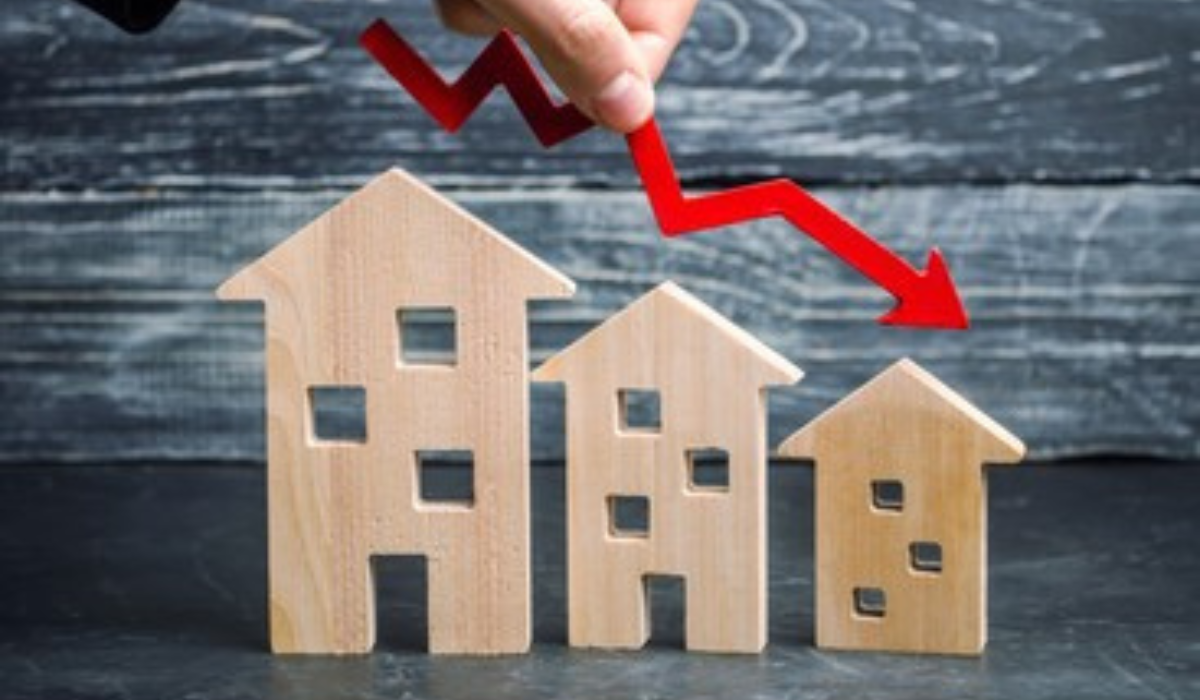Renting out a property can be a great source of income, but not all properties attract the same level of interest from tenants. Have you ever wondered why some properties stay vacant for months while others are rented out in no time? It often boils down to factors that affect the property’s perceived value. From location and amenities to the overall condition of the property, there are subtle yet impactful aspects that can significantly reduce its rental appeal. In this article, we’ll explore these factors and offer tips to ensure your property stands out in a competitive rental market.

Factors that reduce rental value of your property
Even minor flaws in a property can have a significant impact on its rental value. Identifying these factors can help you address them proactively and ensure your property remains attractive to potential tenants.
1. Poor connectivity
Accessibility is a top priority for tenants, and poor connectivity can be a deal-breaker. Properties that are far from major roads, public transport hubs, or lack convenient access to schools, offices, and shopping areas are less likely to appeal to renters. A remote location can make daily commutes inconvenient, which directly impacts the rental value.
What can you do? Addressing this might involve highlighting alternative routes or nearby transport options in your listing, if available.
2. Noisy or unsafe neighborhoods
The surrounding environment plays a crucial role in a tenant’s decision-making process. Properties located in noisy areas, such as near busy roads, airports, or industrial zones, often struggle to attract tenants. Similarly, neighborhoods with a reputation for high crime rates or inadequate safety measures can deter potential renters. Tenants prioritize peace of mind and a sense of security, and these factors can significantly lower the perceived value of your property.
What can you do? Consider measures like soundproofing windows or highlighting nearby safety features, such as security patrols or well-lit streets, to mitigate concerns.
3. Lack of local amenities
Tenants value convenience, and the absence of essential local amenities can make a property less desirable. Proximity to schools, hospitals, grocery stores, public transport hubs, and recreational spaces often influences rental decisions. If your property is situated far from such amenities, it might discourage potential renters, especially families and working professionals.
What can you do? While you can’t move your property closer to these conveniences, highlighting unique selling points like spacious interiors or affordable pricing may help offset this drawback.
4. Outdated interiors or exteriors
First impressions matter, and properties with outdated interiors or exteriors can struggle to attract tenants. Worn-out paint, old-fashioned fixtures, damaged flooring, or shabby exteriors can make the property feel uninviting. Tenants often equate outdated aesthetics with poor maintenance, which can lead to concerns about potential functional issues.
What can you do? Upgrading features like lighting, adding a fresh coat of paint, or modernizing key areas such as the kitchen and bathroom can significantly enhance the appeal and justify a higher rental value.
5. Poor sanitation and plumbing
Sanitation and plumbing issues are major red flags for tenants. Leaky faucets, clogged drains, unreliable water supply, or poor bathroom hygiene can make a property unlivable. Tenants prioritize cleanliness and functional plumbing systems for their daily comfort and convenience. Persistent issues in these areas not only reduce the property’s rental value but can also lead to costly maintenance requests.
What can you do? Ensuring proper sanitation and addressing plumbing concerns proactively can help maintain tenant satisfaction and preserve the property’s appeal.
6. Electrical problems
Electrical issues are not just inconvenient; they can also pose serious safety hazards, making them a major deterrent for potential tenants. Faulty wiring, frequent power outages, outdated electrical panels, or insufficient outlets can signal neglect and raise concerns about the property’s overall safety. Tenants value reliable electrical systems to power their appliances, lighting, and devices seamlessly.
What can you do? Addressing electrical problems through regular inspections and timely upgrades can enhance the property’s appeal and prevent a decline in its rental value.
7. Overpricing the rent
One of the quickest ways to deter potential tenants is by overpricing your rental property. While it’s natural to want to get the most out of your investment, charging more than what the market can bear can make your property seem less attractive. Overpricing can result in longer vacancy periods, reducing your rental income and potentially lowering the overall appeal of your property. If the rent is too high, tenants will likely look elsewhere for better value.
What can you do? Rent should be competitive with similar properties in the area, considering factors like size, location, and amenities.
8. Absence of basic appliances
In today’s rental market, tenants expect certain basic appliances to be included with the property. These typically include essential items like a refrigerator, stove, washing machine, and sometimes even a microwave. Without these, your property may appear less desirable compared to others in the same price range. Not having appliances like a fridge or washing machine may force tenants to either buy their own or live without them, both of which can be inconvenient.
What can you do? Offering these amenities can make your property more attractive and justify a higher rent, ultimately boosting its rental value.
9. Lack of parking space
One of the most common frustrations for tenants is the lack of adequate parking space. In urban areas, where parking can be a premium, not having a designated parking spot can be a dealbreaker for many renters. Whether it’s for personal vehicles or guests, convenient parking options significantly enhance a property’s appeal. For tenants with cars, finding street parking or having to walk long distances can be time-consuming and inconvenient.
What can you do? If your property doesn’t offer parking, consider making arrangements with nearby parking facilities or exploring options to add designated spaces to improve its rental value.
10. Strict rules and restrictions
Tenants are increasingly looking for flexibility and freedom in their living spaces, and properties with rigid rules can deter potential renters. Strict no-pet policies, limitations on customization of spaces, and tight restrictions on guests or parties can create a sense of discomfort for tenants. While some rules are necessary for property upkeep, overly restrictive policies can make your property less attractive to a broader pool of renters.
What can you do? Striking the right balance between maintaining order and offering tenants the freedom to enjoy their space can enhance your property’s rental value and appeal.
11. Short or inflexible lease duration
Many potential tenants prefer stability and the option to stay in a property for a longer duration without the hassle of frequent renewals. If your property offers only short-term leases or doesn’t allow for flexible renewal options, you may be limiting your tenant pool. Families, professionals, and long-term renters typically prefer a sense of security that comes with a longer lease term. Short or inflexible leases can create uncertainty, causing potential tenants to look elsewhere for a more stable living arrangement.
What can you do? Offering flexibility, such as the option for longer leases or easy renewals, can make your property more desirable and help maintain a steady stream of tenants.
12. Cracks or damp walls
Visible cracks or damp walls are a clear red flag for many tenants, as they often signal underlying structural or water-related issues. Dampness can lead to mold growth, unpleasant odors, and potential health risks like respiratory problems. Cracks in walls may not only affect the aesthetic appeal of the property but can also point to serious foundation issues that could get worse over time. Tenants may be hesitant to rent a property that shows signs of damage, as it raises concerns about the overall safety and comfort of the space.
What can you do? To preserve your property’s value, it’s essential to address any dampness or cracks promptly and repair them professionally.
13. Unstable foundations or roofing
The foundation and roof of a property are its most crucial structural elements. If either is unstable or in need of repair, it can significantly lower the rental value. Issues with the foundation can lead to uneven floors, cracks in walls, and an increased risk of more severe structural damage. Likewise, a compromised roof can lead to leaks, water damage, and even the potential for collapse. These problems not only decrease the property’s appeal but can also make tenants feel unsafe. Prospective renters may be reluctant to move into a home where the stability is in question.
What can you do? Regular maintenance and timely repairs to the foundation and roof are essential to protect the value of your property and ensure tenant safety and satisfaction.
14. Poor natural lighting or ventilation
Natural light and proper ventilation play a significant role in the comfort and livability of a property. Properties that lack sufficient natural light can feel dark, cramped, and uninviting, which can be a major turn-off for potential tenants. Additionally, poor ventilation can lead to stuffy air, increased humidity, and unpleasant odors, creating an uncomfortable living environment. These issues can contribute to health concerns such as respiratory problems and mold growth. Tenants are more likely to choose a home with plenty of light and fresh air, as it can positively impact their mood, well-being, and overall quality of life.
What can you do? Enhancing natural light through window upgrades or adding ventilation systems can help improve the appeal and rental value of your property.
15. Awkward layout or small spaces
The layout and size of a property are crucial factors in determining its appeal to potential tenants. An awkward layout, such as poorly placed walls or rooms that are difficult to furnish, can make a property feel cramped and uncomfortable. Similarly, small spaces with limited functionality can limit how tenants use the space, making it less attractive, especially for families or individuals looking for more room. In some cases, tenants may feel that they are paying a premium for a space that doesn’t suit their needs.
What can you do? Improving the flow of a property, knocking down unnecessary walls, or maximizing storage space can go a long way in increasing the rental value by making the space feel more open, functional, and versatile.
16. Negative tenant reviews or word of mouth
Tenant reviews and word of mouth play a significant role in shaping the perception of a rental property. If previous tenants have had negative experiences—whether due to poor management, unresolved maintenance issues, or unpleasant living conditions—this can quickly tarnish your property’s reputation. Potential tenants often seek feedback from current or former residents before committing, and negative reviews can discourage interest. A property with a bad reputation can lead to long vacancies or difficulty securing tenants, even if the rental price is competitive.
What can you do? To avoid this, maintaining open communication, addressing tenant concerns promptly, and ensuring a positive living experience can help foster good reviews and a stronger reputation, which will improve rental value.
17. Unfavourable market trends
The rental market is often influenced by external economic factors, such as supply and demand, interest rates, and changes in the local economy. If the area experiences an economic downturn or sees an oversupply of rental properties, rental prices can drop, reducing the demand for your property. For example, if new construction projects flood the market with apartments or houses, competition can drive rental values down. Similarly, shifts in the job market, new industries moving into or leaving the area, or changes in population demographics can all influence rental demand.
What can you do? Keeping an eye on these market trends and adapting your rental price accordingly can help mitigate the impact of such shifts. If you find yourself in a market with lower demand, consider offering incentives or improving your property to maintain its attractiveness to potential tenants.
18. Floor level
The floor level of your property can significantly impact its rental value. Properties located on higher floors, especially in apartment buildings, tend to be more desirable for many tenants due to better views, more privacy, and reduced noise from street traffic. However, these properties may also come with higher rents due to their perceived advantages. Conversely, ground-floor units may be less expensive due to factors like higher foot traffic, less privacy, and greater exposure to environmental elements. Additionally, some tenants prefer lower floors for convenience, especially if the building lacks an elevator or if they want easier access to outdoor spaces.
What can you do? Understanding the preferences of your target tenant demographic and adjusting your rent accordingly based on the floor level can help ensure your property remains competitive in the market.

Housing.com POV
Understanding the factors that can reduce your property’s rental value is crucial for ensuring that you maximize its potential. From poor connectivity and noisy neighborhoods to maintenance issues like damp walls and plumbing problems, many factors can influence a tenant’s decision to rent your property. Additionally, aspects like pricing, lease duration, and floor level play a significant role in determining whether your property is appealing to prospective tenants. By addressing these issues and making necessary improvements, you can not only boost your rental income but also ensure long-term tenant satisfaction and retention. Keep in mind that maintaining and enhancing the value of your property is an ongoing process that requires attention to detail and responsiveness to tenant needs.
How can I determine the right rent for my property?
Research the local rental market, compare similar properties in the area, and consider factors like size, location, amenities, and condition. A professional appraisal can also help determine a competitive yet profitable rent price.
Should I renovate my property before renting it out?
Renovating can increase your property's appeal and rental value. Focus on areas that directly affect tenant comfort, such as kitchens, bathrooms, and fresh paint. Even small improvements can make a big difference.
Can I negotiate the lease terms with a tenant?
Yes, lease terms are negotiable, including rent price, duration, and rules. Clear communication with tenants and flexibility can help both parties come to an agreement that benefits them without sacrificing your property’s value.
Does the presence of pets affect rental value?
The presence of pets can make your property less appealing to some renters. However, allowing pets with proper guidelines and additional pet deposits can attract a larger pool of potential tenants, especially in pet-friendly areas.
How can I make my property more energy-efficient?
Simple upgrades like energy-efficient appliances, proper insulation, LED lighting, and programmable thermostats can make your property more attractive to eco-conscious tenants, potentially lowering utility bills and increasing its rental appeal.
| Got any questions or point of view on our article? We would love to hear from you. Write to our Editor-in-Chief Jhumur Ghosh at jhumur.ghosh1@housing.com |







